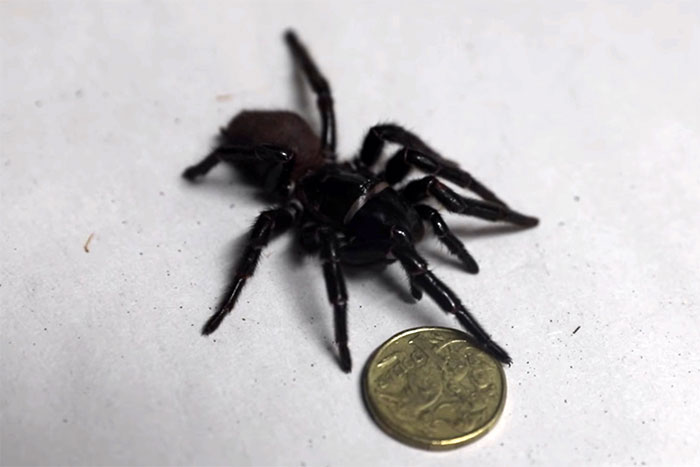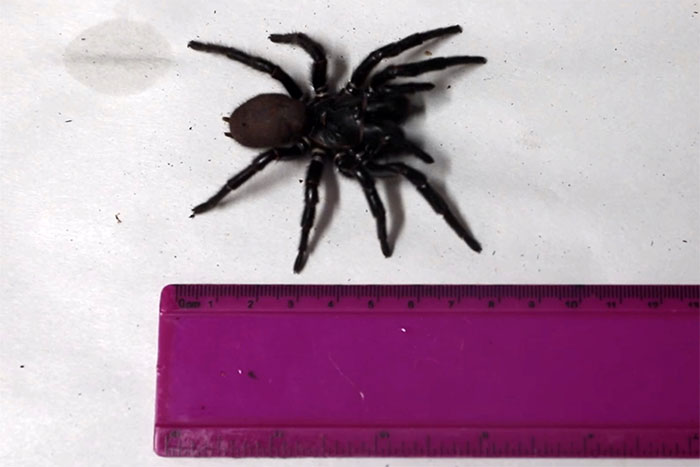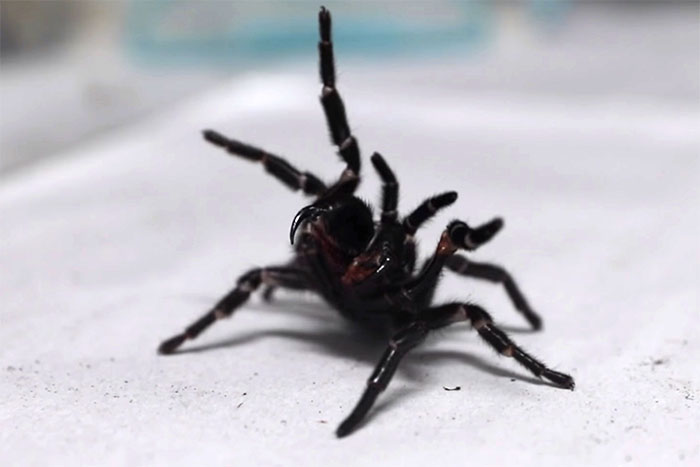The deadly funnel-web spider, also known as the “eight-legged monster,” has the ability to bite through a fingernail with its 2.5 cm long fangs.
Staff at the Australian Reptile Park in New South Wales were astonished when they received a gigantic spider donated by an anonymous woman.

Highly venomous funnel-web spider.
Experts confirmed that this is an extremely venomous spider capable of biting through human fingernails with its sharp fangs.
Michael Tate, an education officer at the Australian Reptile Park, stated that the anonymous donor sent the spider as part of their search for a spider venom antidote.
The spider measures approximately 7.62 cm, double the length of a typical spider, making it the largest spider Michael Tate, who has worked at the park for over 30 years, has ever seen.

Spider twice the size of ordinary spiders.
The video recorded by Michael Tate shows the spider placed next to a coin and other objects, highlighting its enormous size. At times, the spider resembles a cobra with its multiple gigantic fangs.
Funnel-web spiders typically prefer to eat cockroaches and other arthropods, hunting their prey through dense webs positioned outside their burrows.

Long fangs that bite deeply and inject venom into the opponent.
A representative from the Australian Reptile Park noted that recent humid weather has created ideal conditions for funnel-web spiders to thrive.
In fact, the Australian Reptile Park specializes in milking funnel-web spiders for their venom, which is used to create antivenom, significantly aiding in saving 300 lives each year.
The park stated that they extract raw venom from funnel-web spiders weekly and send it to the Seqirus center in Melbourne for antivenom production.
Tate mentioned: “This spider is extraordinarily large, and if we can encourage more people to submit more spiders, it would help save even more lives. We really want to find out where it came from and hope to discover more giant spiders like this.”
The infamous spider is among approximately 40 species known for their high toxicity and rapid effects. They have been linked to 13 fatalities in Australia in recent years, serving as a symbol of fear yet fascination and mystery for many in Sydney.


















































